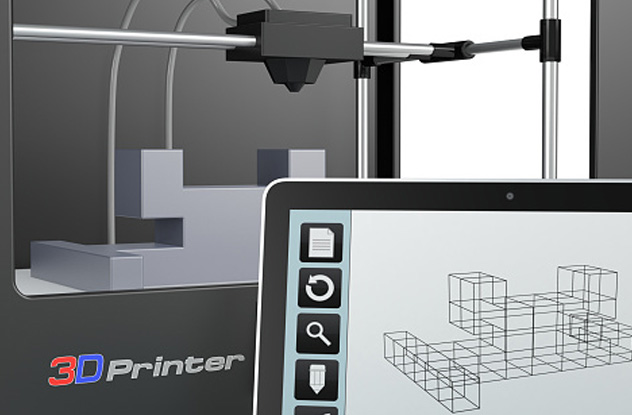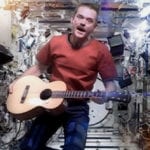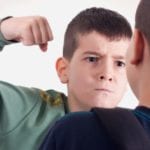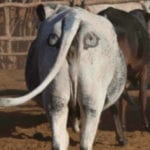 Music
Music  Music
Music  History
History 10 Less Than Jolly Events That Occurred on December 25
 Weird Stuff
Weird Stuff 10 Funny Ways That Researchers Overthink Christmas
 Politics
Politics 10 Political Scandals That Sent Crowds Into the Streets
 Weird Stuff
Weird Stuff Ten Bizarre Facts About The Doge Meme
 Our World
Our World 10 Ways Your Christmas Tree Is More Lit Than You Think
 Movies and TV
Movies and TV The 10 Coolest Stars to Set Sail on The Love Boat
 History
History 10 Things You Didn’t Know About the American National Anthem
 Technology
Technology Top 10 Everyday Tech Buzzwords That Hide a Darker Past
 Humans
Humans 10 Everyday Human Behaviors That Are Actually Survival Instincts
 Music
Music 10 Surprising Origin Stories of Your Favorite Holiday Songs
 History
History 10 Less Than Jolly Events That Occurred on December 25
 Weird Stuff
Weird Stuff 10 Funny Ways That Researchers Overthink Christmas
Who's Behind Listverse?

Jamie Frater
Head Editor
Jamie founded Listverse due to an insatiable desire to share fascinating, obscure, and bizarre facts. He has been a guest speaker on numerous national radio and television stations and is a five time published author.
More About Us Politics
Politics 10 Political Scandals That Sent Crowds Into the Streets
 Weird Stuff
Weird Stuff Ten Bizarre Facts About The Doge Meme
 Our World
Our World 10 Ways Your Christmas Tree Is More Lit Than You Think
 Movies and TV
Movies and TV The 10 Coolest Stars to Set Sail on The Love Boat
 History
History 10 Things You Didn’t Know About the American National Anthem
 Technology
Technology Top 10 Everyday Tech Buzzwords That Hide a Darker Past
 Humans
Humans 10 Everyday Human Behaviors That Are Actually Survival Instincts
10 Crazy Ideas From The World Of Space Exploration
If, 100 years ago, you told people that a machine we made would land on Mars and send us back photos, many of them would have thought you insane. That’s the thing about space exploration. It is such a new concept with innovations made every day that it’s hard to distinguish science fact from science fiction. All space-related ideas sounded crazy at one point or another. Some of them worked and don’t sound as crazy anymore. Others are still pretty out there.
10The Squid Rover

Jupiter’s moon Europa has long been seen as a great candidate for extraterrestrial life due to the high likelihood of the moon having oceans under an icy crust. We have been itching to send something there to see exactly what Europa has to offer. A proposed joint venture between NASA, ESA, and the Japanese and Russian space agencies to schedule a mission to Europa in 2020 was canceled due to NASA’s budget problems. Currently, an ESA-led mission named JUpiter ICy moons Explorer (JUICE) is scheduled for a 2022 launch. The probe would arrive on Europa in 2030. When it does, it might carry a very peculiar rover.
The device in question is a soft-robotic rover with electrodynamic power scavenging. We call it a squid rover due to its unique architecture clearly based on that particular cephalopod. The concept was created at Cornell University and was approved by NASA for further research. It’s part of the new NASA Innovative Advanced Concepts (NIAC) program, which, in its own words, “aims to turn science fiction into science fact.”
The rover is still very much in its early stages. It would feature tentacle-like structures that would harvest local magnetic fields as a source of energy, as well as electroluminescent “skin” that would illuminate the underwater environment.
9Project HARP

From the world of sci-fi, we move on to the world of Looney Tunes. At least, that’s what Project HARP would appear to be at first glance. Short for High-Altitude Research Project, this was a joint venture between the US Department of Defense and the Canadian Department of National Defense to send projectiles into space using a giant gun.
The project was started in 1961 mostly due to Canadian ballistics engineer Gerald Bull. He had gotten the idea a decade earlier while working on ICBM missiles at the Canadian Armaments and Research Development Establishment (CARDE). The project was set up on an airport in Barbados so projectiles could be fired in the Atlantic Ocean. At first, a 20-meter-long gun (65 ft) was used, but it was upgraded to 40 meters (130 ft) pretty quickly. The whole installation was ready in 1962, but the Cuban Missile Crisis postponed the operation until the next year.
Initial results were promising, and another test site was set up in Yuma, Arizona. In 1966, this gun shot a 180-kilogram (400 lb) projectile at a speed of 3,600 meters (12,000 ft) per second at a record altitude of 180 kilometers (590,000 ft). As time passed, more and more backers lost interest in the project and pulled funding. Eventually, the Vietnam War and worsening relationships between the USA and Canada forced the project to shut down. The gun in Barbados is still there today, a relic overlooking the Caribbean Sea.
8The Titan Submarine
Like Europa, Saturn’s moon Titan is seen as the Holy Grail for space explorers. It has above-surface methane lakes and oceans that we are just itching to investigate. In 2004, the Cassini spacecraft mapped out the moon extensively and gave us a pretty good idea of its geography. In 2005, the Huygens probe landed on the moon and sent back the first photos from its surface. The next step would be to create something that could explore the depths of Titan’s waters, and for that, we are going to build a space submarine.
The submarine design was proposed by Dr. Ralph Lorenz at the Lunar and Planetary Science Convention and was approved by NASA. If launched, it would head for the Kraken Mare, Titan’s largest sea. On the outside, the drone would resemble a regular submarine, apart from a large antenna that would be necessary to transmit the data over a billion miles back to Earth. However, the conditions on Titan would require the submarine to deal with unique problems. For starters, temperatures on the moon can reach – 180 degrees Celsius (–290 °F)
Furthermore, we have no idea what depths the sub will have to deal with. The depth, as well as the sea’s composition, will make design elements like a traditional ballast tank unfeasible. The sub will even require a special delivery system using a variant of the military X-37B mini shuttle due to its size and shape.
7Project Horizon

The space race between the United States and the Soviet Union triggered the most productive era of space exploration. Even so, this was a whole new world, still in its infancy, so a lot of trial and error was required to figure out what worked and what didn’t. Before the Apollo program finally put a man on the Moon in 1969, many other plans were made and scrapped.
Project Horizon is a recently declassified plan of the US Army to build a military base on the Moon. That project would be overly ambitious even today, but the program was developed in 1959. The army considered it feasible to complete the base and equip it with soldiers and astronauts within the following decade.
Maybe this was incredibly optimistic of the army, or maybe it just shows how eager both sides were to gain the upper hand in the Cold War. The report stressed how critical it was to establish a military presence on the Moon, considering it only a matter of time before the Soviets attempted the same.
The project never went further than the planning stage. It if had, it would have called for almost 150 Saturn rockets to be launched to carry the cargo. When it was finished, the base would have housed 10–20 people. Until then, the astronauts could have used natural “holes” found on the Moon, covered and sealed with pressure bags, to create living areas.
6The Wrangler

The universe can be a dangerous place. Many things can snuff out life on our entire planet without too much effort: gamma-ray bursts, supernovas, colliding galaxies, and more. And, of course, one threat already struck our planet in the past—asteroids. The Earth has been hit by asteroids during its 4.5 billion years of existence, and it is likely that it will be hit again in the future. It might happen tomorrow (it won’t) or in a billion years, but people at NASA are already looking into solutions for this problem.
One solution is called the Weightless Rendezvous And Net Grapple to Limit Excess Rotation (WRANGLER) system, courtesy of Tethers Unlimited, Inc. This net and tether system could be deployed by a satellite to capture and de-spin an asteroid, rendering it (mostly) harmless. The program has already been accepted to the NASA Innovative Advanced Concepts Program, and it is being developed as a simpler, more cost-effective alternative to NASA’s own Asteroid Redirect Mission (ARM).
There are two main components to the system. One is the GRASP net capture device, and the other is the SpinCASTER tether/winch mechanism. By using the leverage of a tether, a small satellite would be able to reduce the angular momentum of a much larger object. The WRANGLER has already proven successful in a microenvironment and is currently being developed to full scale.
5Zvezda Moon Base

The Americans weren’t the only ones keen to put an inhabitable base on the Moon. The Soviets were just as eager. They started their lunar program in secret with two goals: first, to do a manned lunar flyby and then to actually land cosmonauts on the Moon. However, the US beat them on both counts, so the projects were scrapped and kept hidden until the ’90s.
Next up came the idea of constructing a permanent base on the Moon, known as Zvezda (Russian for “star”) or the DLB Lunar Base. The project started in 1962 and was headed by lead Soviet space engineer Sergei Korolev. The moon base would have been made out of nine separate modules, each one with a specific purpose, such as living quarters, dining, medical, or a laboratory. Together, they would have weighed 18 tons, so they needed to be delivered separately. Additionally, the cosmonauts would have had access to Lunokhod robotic rovers to help them get around on the Moon.
The project received considerably more attention and funding after 1969, bolstered by the Americans’ efforts. However, its success relied on the effectiveness of the N1 rocket (the Russian equivalent of the Saturn V rocket) used to deliver heavy payloads beyond low-Earth orbit. When the N1 failed to work properly, the rocket and all projects dependent on it were canceled.
4The Stanford Torus

The International Space Station has housed inhabitants for almost 15 years. Mir was operational from 1986 until 2001. However, while massive in size, these stations are not really intended to house a lot of people. Mir had a crew of three. The ISS has a capacity to support six residents, although it now currently has three people aboard. The Stanford torus was a bit more ambitious than that. It was an idea for a space habitat meant to support 10,000 people.
The plan for this design came in 1975 as the result of a summer study organized by NASA and Stanford University. It consisted of a torus (a donut-shaped ring), which was 1.5 kilometers (1 mi) in diameter and was capable of performing a full rotation every minute to replicate Earth’s gravity.
The Stanford torus never advanced past the idea stage. The design for the torus required 10 million tons of material, most of it extracted from the Moon and from asteroids. Only materials unavailable there would have been brought over from Earth. The space station would have been located at the Earth-Moon L5 Lagrangian point—a point where a small object between two large bodies is affected by their gravity so that it can maintain a stable position.
3Printable Spacecraft

3-D printing seems to be the technology of the future, with almost no limit to what it can accomplish. We are already capable of printing flexible electronics that work on common consumer goods like cell phones. These are not only cheaper and easier to make but also smaller and lighter. One ambitious idea coming out of NASA’s own Jet Propulsion Lab (JPL) suggests that, in the future, we might be able to print entire spacecraft.
The Printable Spacecraft is another plan coming out of the NIAC. It is currently in Phase 2, so it has already gone through and succeeded in its original objective, which was to see if it was possible to print all the electronics necessary for a functional spacecraft. The second phase has several new objectives, including actually printing a benchtop model spacecraft. NASA also needs to determine how practical it is to create a printed spacecraft for just a single mission.
If everything works, NASA believes that cheap and effective printed spacecraft will revolutionize space exploration. It estimates that some kind of working prototype is about 10 years away, but it also imagines how, in the distant future, you could just carry a printer with you and create whatever probes or crafts you might need onsite.
2Venus Landsailing Rover

Venus is not a very friendly place. Due to temperatures that reach 450 degrees Celsius (840 °F) and a corrosive atmosphere, exploring our neighboring planet has proven to be quite difficult. So far, the best we could do was land a stationary rover on the surface of Venus that remained operational for a whopping two hours. Compare that to the rovers that function for years and years on Mars, and we see that exploring Venus is still one of our most ambitious goals despite its close proximity.
Now, we have a new approach thanks to the NASA Glenn Research Center—the Venus Landsailing Rover. Dubbed the Zephyr, this new rover goes back to basics and seeks to harness the power of the wind for propulsion, just like a typical sail. Even though Venus doesn’t have very strong winds (they only reach around 3 kilometers [2 mi] per hour), the pressure on the planet would ensure that even a small breeze was capable of generating significant power.
The Zephyr would be built out of materials more than capable of withstanding the high temperatures. It would mostly remain stationary, only deploying its sail when it needs to move to a new spot. This is helped by Venus’s flat landscape, which has very few obstructions. Using such a conservative approach to energy consumption, NASA estimates that Zephyr would be able to survive a whole month on the planet.
1Project Orion

Space travel requires a lot of resources, so we are always on the lookout for new potential sources of energy better than what we already have. Back in the 1950s, it seemed like nothing was more powerful than the atomic bomb. An ongoing effort sought new uses for this incredible source of energy that weren’t as destructive as its main purpose. Maybe it could be used to power a spacecraft?
The idea of nuclear pulse propulsion was developed by physicists Ted Taylor and Freeman Dyson. They worked on their plan, named Project Orion, to develop a way of propelling a spacecraft using a series of atomic bomb detonations behind it. The concept of a nuclear drive was not a new one. This idea had been previously explored by Stanislaw Ulam, a Polish-American mathematician who took part in the Manhattan Project.
Work on the project started in 1958. Back then, NASA didn’t exist yet, so Project Orion was funded by the Advanced Research Projects Agency (ARPA) of the Department of Defense, which only had a passing interest. When NASA was established, it and the Air Force divided up ARPA’s projects, with Orion left out in the cold, as nobody saw it as an asset. It would be a few years before NASA got involved, but by then, the Limited Test Ban Treaty of 1963 on nuclear weapons made it impossible for Orion to develop, given the large amounts of potential nuclear fallout.
Radu is a history/science buff with an interest in all things bizarre and obscure. Share the knowledge on Twitter, or check out his website.








